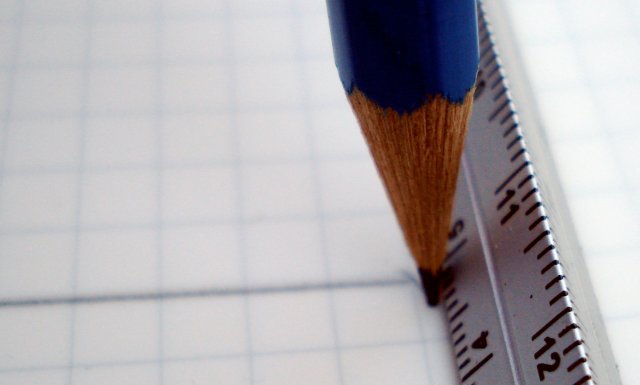
Let’s take a brief trip into the almost departed world of drafting by pencil. Before computer aided design (CAD), precision drawings were made by hand. Architects, draftspeople, engineers, and others, used lead pencils alongside other tools to create plans for everything from small industrial parts to immense cities.
The observations made here are probably trivialities to those familiar with the tools. Yet as an “obsolete” technology, the capabilities of drafting film and film pencils may be unknown to those of us who never experienced these products first hand, and I thought it would be enjoyable to share some discoveries.
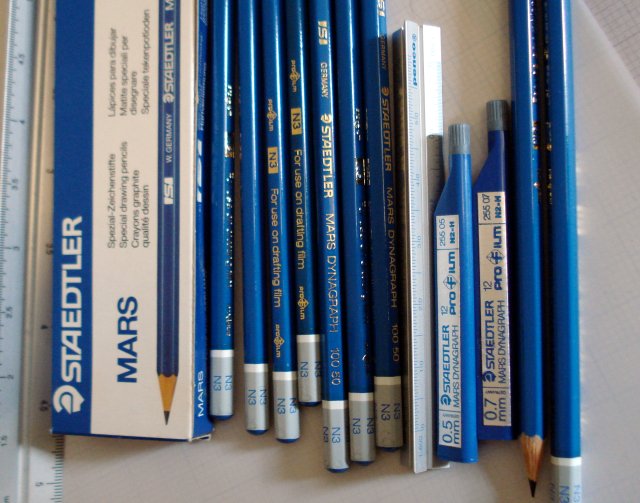
I’ve been fortunate to be able to assemble some vintage supplies.
– Staedtler Mars Dynagraph 100 50 woodcase pencils in grade N3.
– Staedtler Mars Dynagraph 0.5mm (255 05) and 0.7mm (255 07) mechanical pencil leads in grade N2.
– Mylar polyester drafting film.
The lead refills and drafting film were purchased at retail about two weeks ago! The pencils came from eBay.
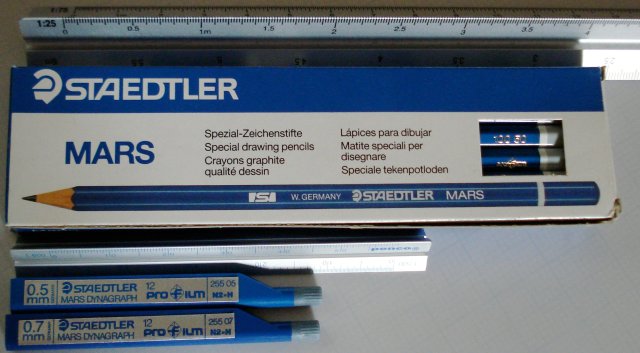

Some further notes.
The grades – N0 through N6. An old Staedtler catalogue online at leadholder.com suggests these comparisons:
N0 = HB
N2 = H
N4 = 5H
Adding information from this fascinating chart at Lowell Bueprint, we can complete the chart this way:
N0 = HB
N1 = F
N2 = H
N3 = 3H
N4 = 5H
N5 = 7H
Both the pencils and the leads have an additional logo, “profilm”. Though I own many Staedtler pencils, I have not seen this additional graphic before. This site, for example, suggests that this is an early 1980s Staedtler trademark, now abandoned.
The pencils are explicitly marked “For use on drafting film.”
The film is something I’ve been seeking for some while. I was quite happy to discover a local retailer who was willing to cut a small piece for me off of a roll. Mylar is Dupont’s trademarked name for polyester film. There are other brands, but Mylar seems to be a bit of a standard.
The photos below generally show the Mylar on top of graph paper – either 2mm vellum, or a Moleskine notebook. This is for contrast – it had to be placed on some sort of surface. The Mylar does not have any lines. It does have a milky translucence, and feels quite strong to the touch.

Observation no. 1: The erasure of Dynagraph pencil lines on Mylar is remarkable. To my own eye in direct sunlight, it seemed close to perfection. The macro setting of the camera brings one back to earth, but still, I have to say that the erasure properties of the N3 Dynagraph pencil/Mylar film/Mars plastic eraser trio well surpass the paper and pencil experience. Even the typical paper indentation that one can usually discern is absent, presumably due to the film’s strength.
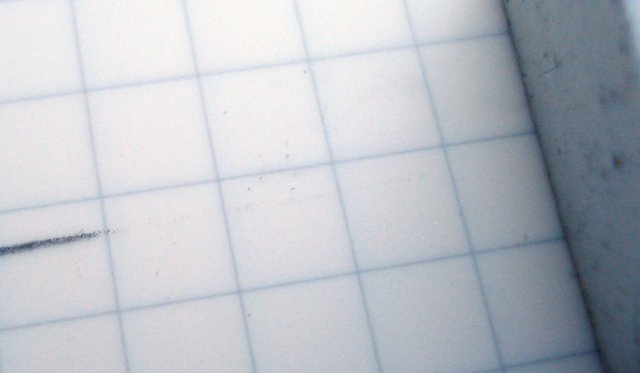
Observation no. 2: The specialty lead is truly non-smearing! To the right is the misbehaving Staedtler Mars Lumograph 2H. Light finger movement causes considerable smudging. The Dynagraph leaves a nearly immutable line.
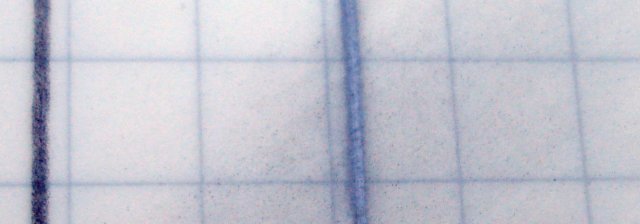
Observation no. 3: Pencil grades, even the very hard grades that behave like rocks on paper, are much more vivid on film. A 3H looks like a 3B. Take the extreme Mitsubishi Hi-Uni 10H:
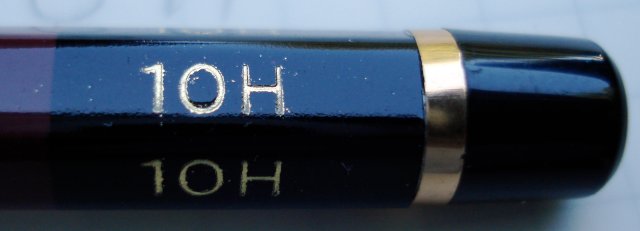
It is near useless, fainter than the printed lines, in a notebook:
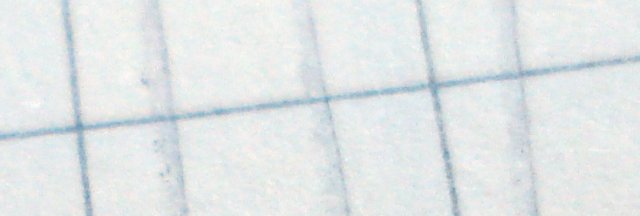
Yet makes a valid mark on the drafting film:
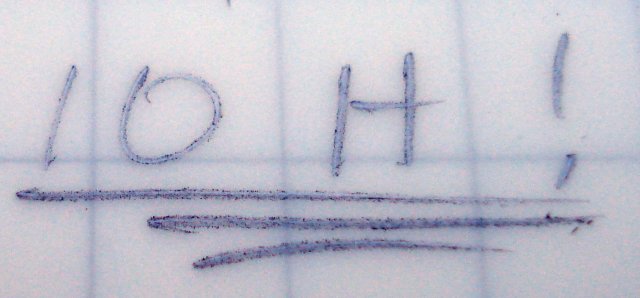
So film certainly gives an invigorated life to those 2H through 10H pencils which are very challenging to use on paper.
To summarize these basic observations about film pencils on film: Perfect erasure, no smearing, and lines appear significantly darker.
The computer isn’t going away, but I’m wondering if these properties might not be valuable to artists. And I haven’t yet noted that this “paper” is supposed to last centuries and maintain stability.
I can’t find a Mylar sketchbook for sale, but did find that David Hockney was aware of this medium. If you use this medium or are aware of other artists who use it, please leave a comment.
And while this post is engaged in a bit of a “rediscovery” of the past, let’s acknowledge those who’ve never forgotten these skills: twenty-first century architects who still work with pencil. These two have mentioned their continued use of pencils at this blog:
Otto-Walker Architects, Park City, Utah
J Mark Nelson LLC, Colorado Springs, Colorado
These products may have peaked in popularity in the 1980s, but the Dynagraph and Mylar duo still seem capable of getting a precision job done.
P.S. Please see “Zeitreise” at Lexikaliker, which shows some vintage advertisements for Duralar (the predecessor name of Dynagraph) pencils on Mylar.
